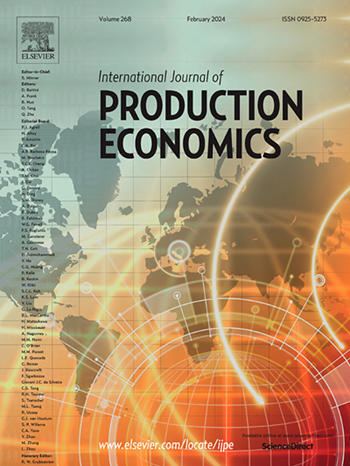非对称质量层竞争下垂直概率销售机制的分析探索
IF 9.8
1区 工程技术
Q1 ENGINEERING, INDUSTRIAL
引用次数: 0
摘要
与现有文献关注概率销售(PS)的横向特征相比,垂直质量市场的PS在美国和中国的旅游和营销行业受到了极大的关注。我们着眼于纵向PS机制的一般框架,其中涉及企业不对称的质量层竞争和中间零售商的积极作用,我们考虑了双寡头垄断,其中领导者企业可以通过直接渠道或通过中间零售商的间接渠道内生地生产差异化质量的PS产品,而追随者企业通过提供外生差异化的质量水平来销售透明的产品。本文利用Stackelberg博弈论,通过对期望质量的概率产品进行量化,构建了非对称竞争下涉及PS的经济模型,并给出了三种情况下企业利润最大化的策略。其次,我们从理论上分析了三种策略来识别PS的优势,并进一步从收入定价、社会福利和消费者剩余三个方面对PS与传统销售(TS)进行比较。我们的研究结果表明:(1)PS并不总是盈利的;只有当期望质量水平较低时,PS才能有效;(2)。PS可以削弱不对称的质量层竞争,进一步减轻同类相食效应。在我们的双寡头模型中,如果不存在概率销售,均衡最终会收敛到一个企业生产高质量产品而另一个企业生产相对低质量产品的情况。最后,我们通过整合风险态度和口碑说服来扩展我们的模型。这些补充增强了我们结论的适用性。本文章由计算机程序翻译,如有差异,请以英文原文为准。
Vertically probabilistic selling mechanism under asymmetric quality-tier competition: An analytical exploration
Compared with the existing literature that focuses on horizontal features of probabilistic selling (PS), PS in vertical quality markets is receiving significant attention in the travel and marketing industries, both in the United States and China. Focusing on a general framework for a vertically PS mechanism that involves firm asymmetric quality-tier competition and the active role of an intermediary retailer, we consider a duopoly, where the leader firm can endogenously generate differentiated quality PS products via either the direct channel or the indirect channel through an intermediary retailer, while the follower firm sells transparent products by providing exogenously differentiated quality levels. Utilizing Stackelberg game theory, we construct an economic model involving PS under asymmetric competition by quantifying probabilistic products in terms of expected quality and provide firms with profit-maximizing strategies under three scenarios. Second, we theoretically analyze three strategies to identify the advantages of PS, and further conduct a comparison of PS and traditional selling (TS) in terms of revenue pricing, social welfare and consumer surplus. Our results suggest that (i.) PS is not always profitable; only if the expected quality level is low could PS be effective; (ii.) PS could weaken asymmetric quality-tier competition and further mitigate cannibalization effect. In our duopoly model, if there were no probabilistic sales, the equilibrium would eventually converge to a situation where one Firm produces a high-quality product and the other produces a relatively low-quality product. Finally, we extend our model by incorporating attitude to risk and word-of-mouth persuasion. These additions enhance the applicability of our conclusions.
求助全文
通过发布文献求助,成功后即可免费获取论文全文。
去求助
来源期刊
CiteScore
21.40
自引率
7.50%
发文量
266
审稿时长
52 days
期刊介绍:
The International Journal of Production Economics focuses on the interface between engineering and management. It covers all aspects of manufacturing and process industries, as well as production in general. The journal is interdisciplinary, considering activities throughout the product life cycle and material flow cycle. It aims to disseminate knowledge for improving industrial practice and strengthening the theoretical base for decision making. The journal serves as a forum for exchanging ideas and presenting new developments in theory and application, combining academic standards with practical value for industrial applications.

 求助内容:
求助内容: 应助结果提醒方式:
应助结果提醒方式:


